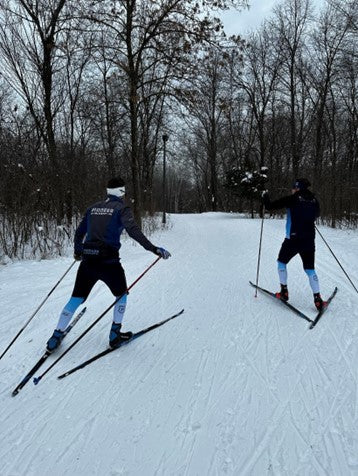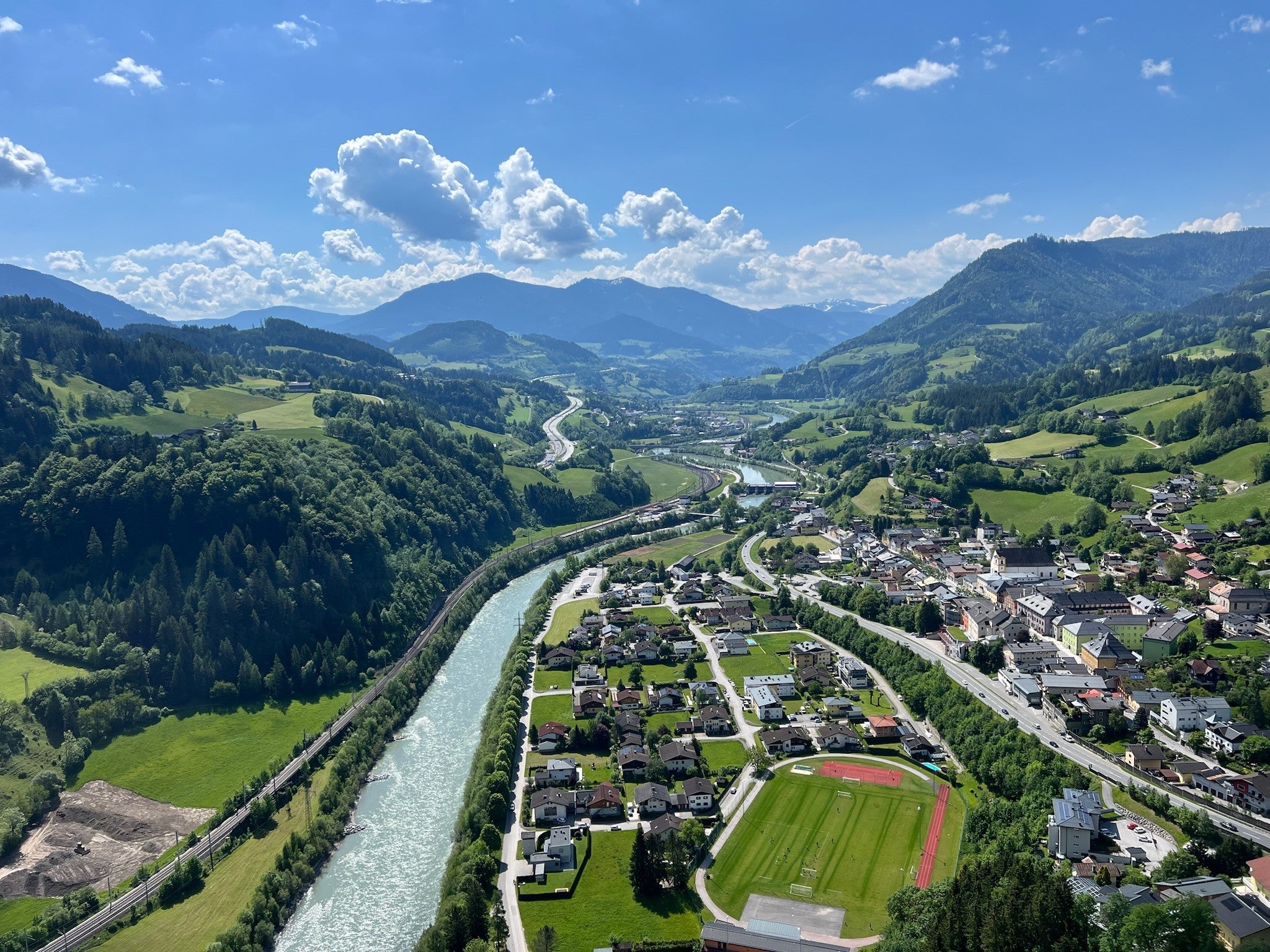Cross-country skiing is one of those sports: folks who’ve done it seem comfortable for hours in little more than two layers. At races, folks strip off jackets and put on skin-tight suits. If you are new to the sport, you might wonder, “How are all these folks not freezing? Let's break it down for the beginner skier:
As easy as 1-2-3
Starting Out: It can be broken into three steps: base-layer, mid-layer, and outer-layer. The base layer is whatever fabrics are up against your skin. Midlayers will vary based on temperatures. An outer layer is whatever garments face the elements.
Baselayers vary in material and warmth.
When new to the sport, find a fabric that feels comfortable against your skin and fits snugly but not tight.
You don’t need to break the bank to be comfortable when starting. Try a synthetic blend of polyester or wool. See what works for you, and when in doubt, never hesitate to shout out to your coach, teammates, or the friendly staff at Pioneer Midwest.
(Beware of the desire to wear the brand-new team hoodie to practice. If it’s made of cotton, it's best to wear it before and after practice.)
Many coaches agree that cross-country skiing and cotton layers do not mix.
“Wearing cotton is the fastest way to spoil the experience of skiing,” Elk River High School assistant coach John Kallemeyn said when asked, “We encourage all our skiers to invest in simple synthetic long underwear that does not have cotton.”
DON’T FORGET: Male athletes need an extra layer of warmth known as the wind boxer in skiing. Stay extra warm where it counts. Find it here:
Click here to shop the Wind Boxer
Notes on SOCKS: Just like the rest of the body base layers, start at a warmth in the middle and see how hot or cold your feet get in your boots. Adjust from there.
Remember: please, not cotton! Start with a blend, something you’d wear to stay warm, sledding or skating. Remember that you know your own feet best. Try to notice if your toes are cold or hot while skiing and move to a thicker or thinner pair accordingly.
Are your feet always cold, regardless of how thick your sock is? No problem! If your feet are super sensitive to cold, consider layering boot covers over any boot. Pioneer Midwest has a wide variety. Check them out here: Boot Covers.
Mid-Layers are just what you think: something that belongs not against the skin but not exposed to the elements.
Here is the temperature variant layer. Start with mid layers that add extra warmth, which is omitted on days when it's 35, and dryland exercises are the day's workout.
It's easier here to be flexible. Try a lighter layer on a warmer day or a thicker wool when the temps dip. Skiers can often be comfortable on warmer ski days with a base layer and a pair of tights.
A word of caution in the middle: ask your coach when you doubt how much to put on.
When young athletes are concerned about getting cold, they will sometimes overdress. An overdressed skier can sweat through whatever they are wearing, stop to sip some water and get chilled to the bone as that sweat cools. Skiers can generally figure out how to dress for the elements with practice. But a new skier (regardless of age!) may benefit by carrying an extra layer.
Outer Layers
Last but not least are the outermost layers. Here, we consider the ski jacket, pants, gloves, and hat/buff.
Most Nordic jackets are made to maximize breathability, warmth, and water resistance.
A well-made jacket can be worn and kept for years or passed down to a younger sibling, cousin, or teammate. Look for something wind-resistant: this layer will break the wind. Check out our Ski Jackets
Most starting skiers pick up a pair of full-length zip pants. This feature is ideal for a young racer because it can be worn over a race suit, worn to warm up in, and taken off quickly before a race starts.
Check out: Men's Sizes and Women's Sizes
Gloves and Hats
At least one pair of ski-specific gloves: a designated pair for the sport.
Note on GLOVES: Start in a mid-weight warmth and check-in. Ski-specific gloves matter because they will breathe while skiing hard and keep a young pair of hands warm when pausing at practice to start or load up in the cold.
Most skiers will get a neck gaiter (or buff), a multipurpose neck scarf. Just like socks, these come in varying layers of lighter and thicker fabrics. Start in the middle. Skiing with a traditional scarf can be cumbersome. The buff can be worn as a headband on warmer days.
Snag a ski hat: Lightweight fabric will quickly wick away sweat while keeping your head warm.
Remember there is no such thing as bad weather, only bad clothing. Stay warm out there folks!



